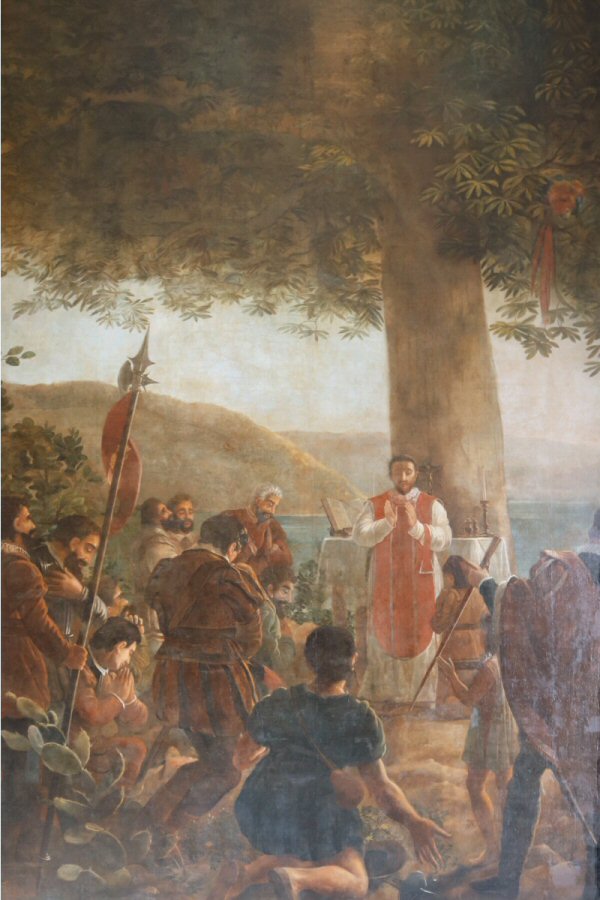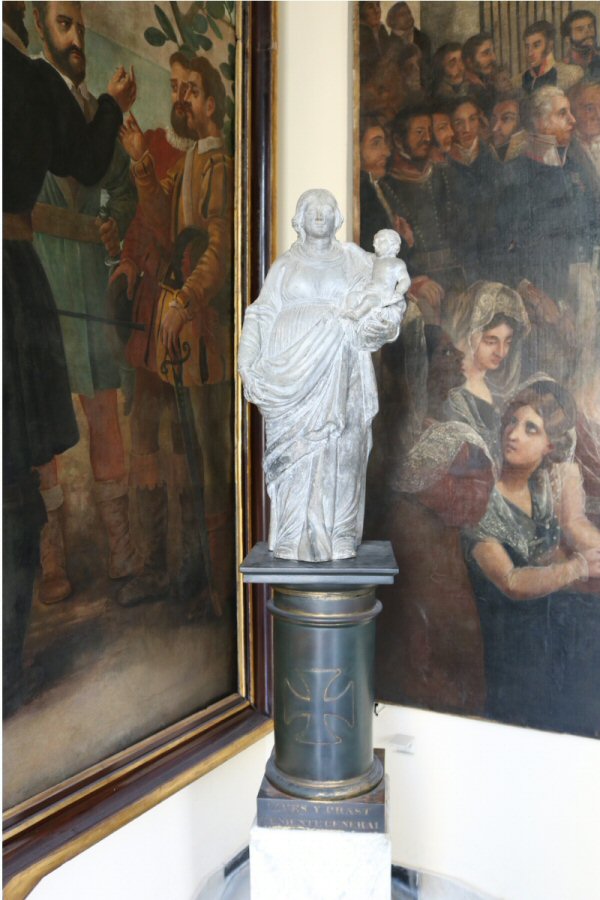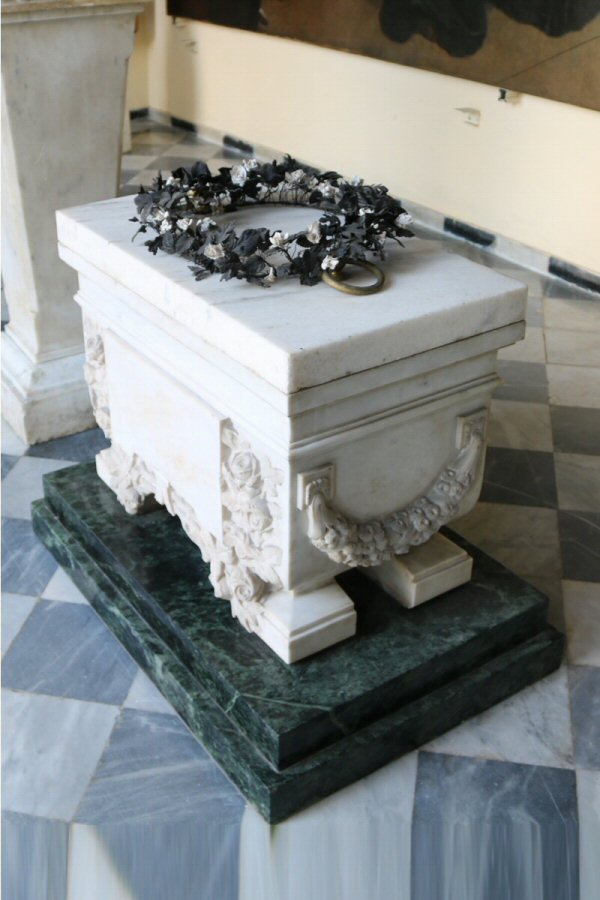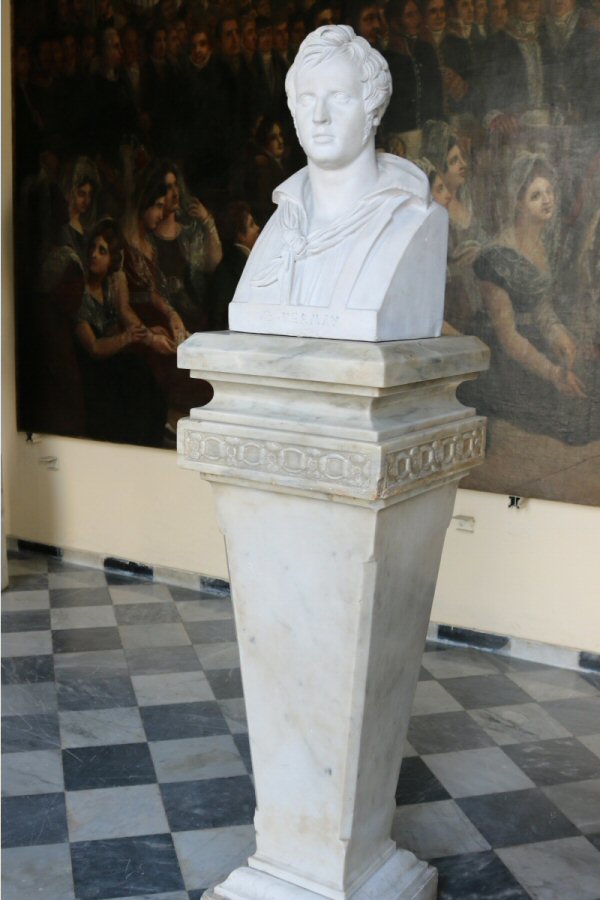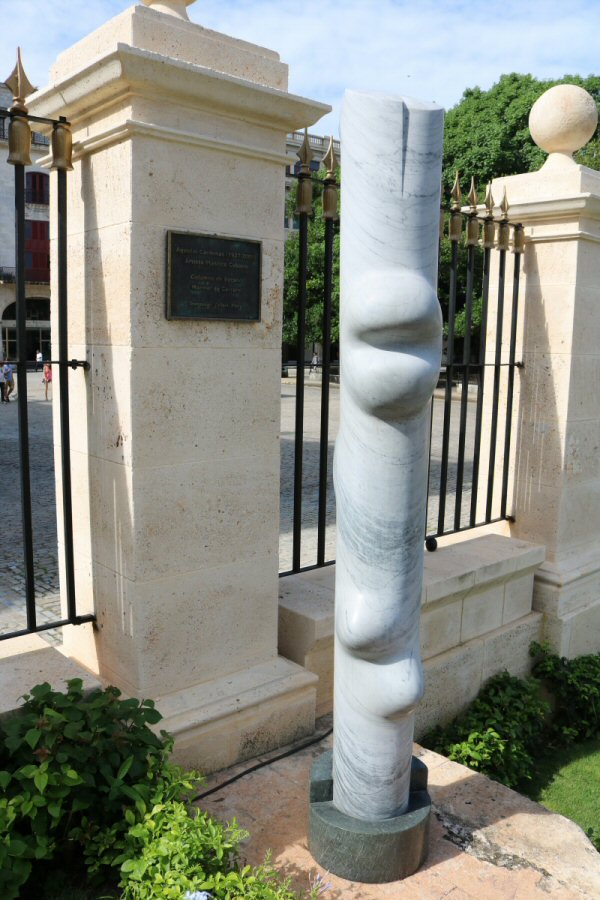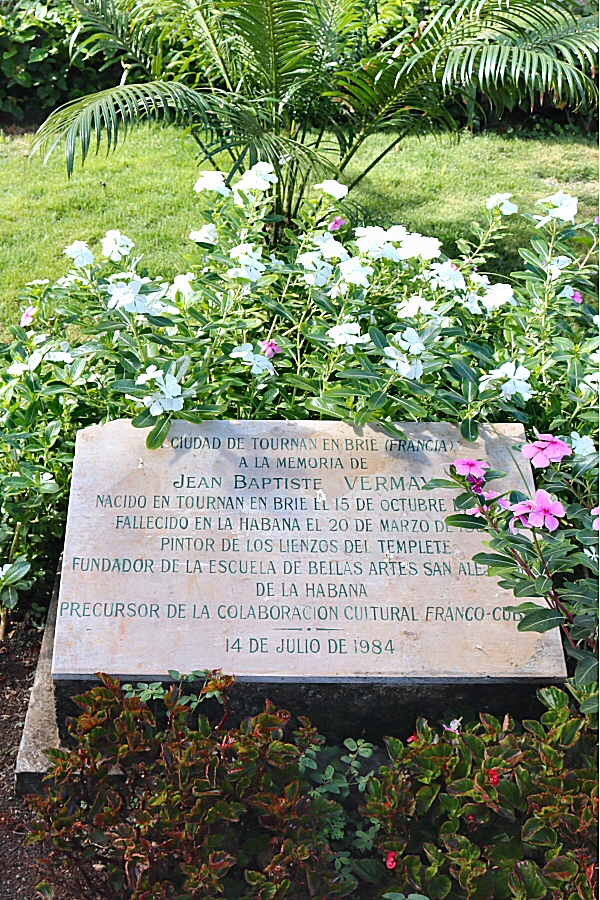ceremony of the blessing of the temple by the bishop Espada in 1828

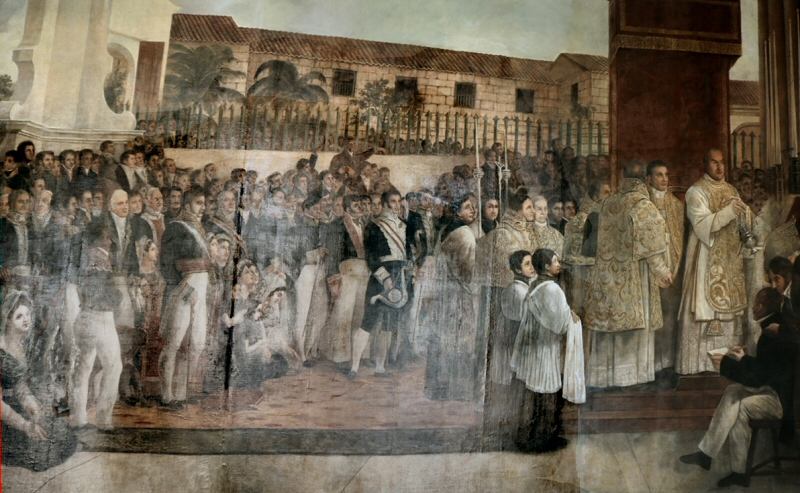
IN
There is not so much space inside the
temple. Three large canvases of the French painter Jean Baptiste
Vermay (1786–1833), the founder of the San Alejandro Arts
Academy in Havana in 1818, are enriching the walls. The canvas
on the right wall represents the first mass offered by Bartolome
de las Casas (protector of the native Indians), whereas the
canvas on the left wall represents the first council (cabildo).
Both are original and from the 19th century. The canvas on the
central wall
represents the ceremony of the blessing of the place by the
bishop Espada and his mass in the presence of the captain
general, the aristocrats and the high officials of the colonial
government at the inauguration of the temple in 1828; it was
placed later after the inauguration of the temple. The works
of the same painter can be seen also inside the Catedral de la
Habana. When he died by cholera, his ashes (together with the
ashes of his wife) were preserved in a marble urn and placed
inside of El Templete beside his bust. At the left corner of the
room, there is the original marble statue of the Virgen del
Pillar.
El Templete was restored recently, at
the end of 2017.
THE CEIBA TREE
The ceiba tree is an important object
in the history of Havana, as it is one of the fundamental axes
for the celebration of the anniversary of the city. Three ceibas
were planted in the place of the first ceiba in the period of
1755 and 1757, but two of them dried out soon. The third one
survived until 1827, when it was necessary to remove it to
facilitate the construction of the temple. Only one of the
three new ceibas that were planted the next year, lasted until
1959 and its root has been re-planted. This ceiba deteriorated
and removed in 2016. The replacing ceiba also withered in one
year. Current ceiba is planted in April 2017. It was 8 years old
and 6 meters high, when it was planted.
St. Christopher’s Day is celebrated by
papal dispensation in Cuba on November 16 since 1519. Every year
in the afternoon of November 16, hundreds of Habaneros flock to
the Plaza de Armas from all quarters of the city to commemorate the founding
of the city. They turn around the sacred ceiba tree three times,
put a coin on the roots of the tree and then they make a wish in
the belief that the orishas will honor their wish.
ARCHITECTURAL FEATURES
El Templete is located at the
northeastern corner of the Plaza de Armas. It is the smallest
and the least striking one among the buildings that surround the
Plaza de Armas. Nevertheless, its architecture represents the
transition of the period, from the 19th-century Cuban baroque to
the neoclassical style. It is the first civil work of
neoclassical design in the history of Havana that had a great
influence on the Cuban architecture. Its façade has a monumental
character with six Doric columns that hold a decorated frieze.
In the center of the pediment there is an inscription that gives
information about the inauguration of the temple in 1828. The
façade has an elegant simplicity and accurate proportion. The
temple is in an elevated position in comparison to the Plaza de Armas and can be accessed by two stairways at both sides. The
steps are made of jaimanitas, but the interior floors are paved
with marble. The tips of the iron fence are spear pointed and
made of bonze.
